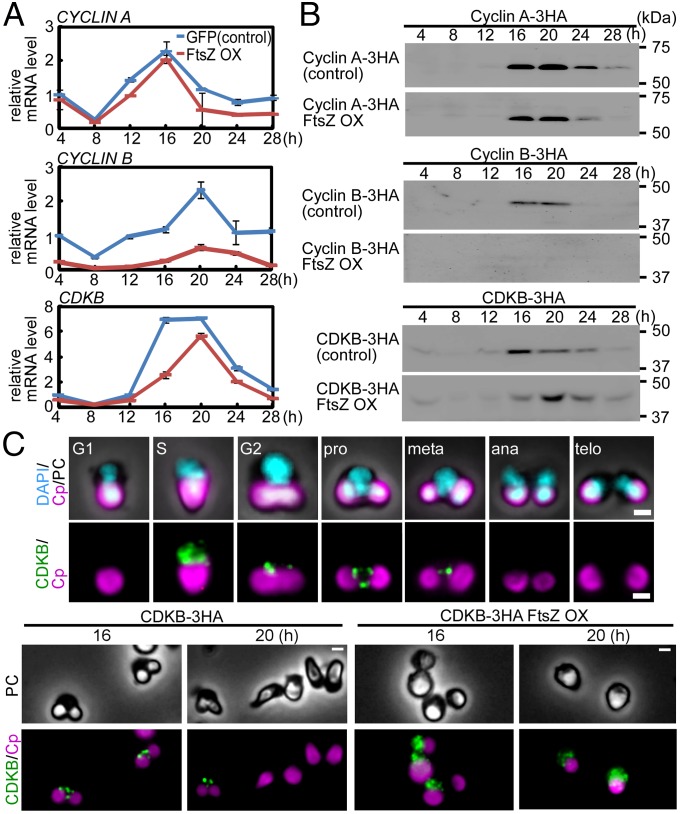Fig. 5.
Effect of FtsZ2-1 overexpression before the onset of chloroplast division on the levels of cyclin A, cyclin B, and CDKB and on the localization of CDKB. Cells were synchronously cultured and heat shocked at hour 8 for 2 h, as shown in Fig. 4. (A) Quantitative RT-PCR analyses showing the change in the mRNA levels of CYCLIN A, CYCLIN B, and CDKB in the control GFP heat-inducible (GFP) or FtsZ heat-inducible (FtsZ OX) cells. DRP3 was used as the internal control. The error bars indicate the SD (n = 3). The expression levels in the control cells at 4 h were defined as 1.0. (B) Immunoblot analyses showing the change in the levels of cyclin A, cyclin B, and CDKB in control GFP or FtsZ OX cells. To detect the respective proteins, 3×HA-epitope–coding DNA was inserted into the respective chromosomal loci. C-terminal 3×HA-tagged proteins expressed by the respective endogenous promoters were detected with an anti-HA antibody. Control and FtsZ OX samples were blotted on the same membrane. (C) Immunofluorescent images of the control and FtsZ OX cells (in both strains CDKB-3HA was knocked into the CDKB locus) showing the change in the level and localization of CDKB. CDKB was detected with an anti-HA antibody. (Upper) The change in the level and localization of CDKB in the control cells during cell-cycle progression. The cell-cycle stage was defined based on the cell shape according to ref. 25. (Lower) The localization of CDKB in the control and FtsZ OX cells at hours 16 and 20 in the synchronous culture. Magenta, autofluorescence of the chloroplast; green, immunostained CDKB-3HA; cyan, DNA stained with DAPI; PC, phase-contrast. (Scale bars: 1 μm.) Two independent experiments produced similar results. The results from one experiment are shown.

